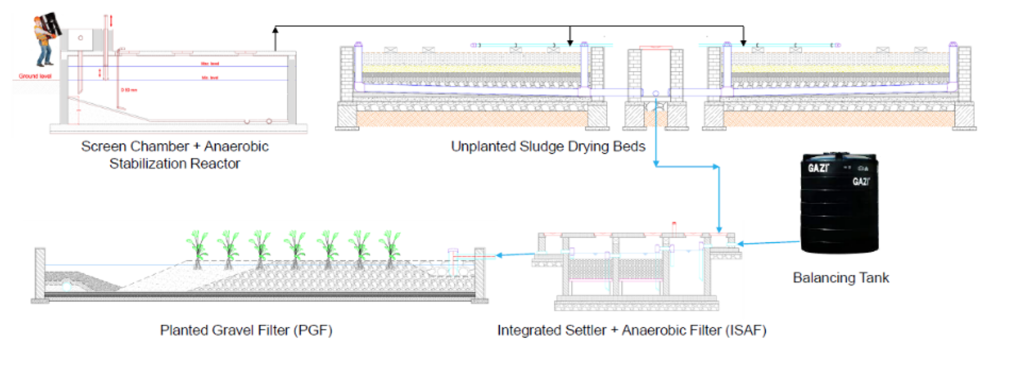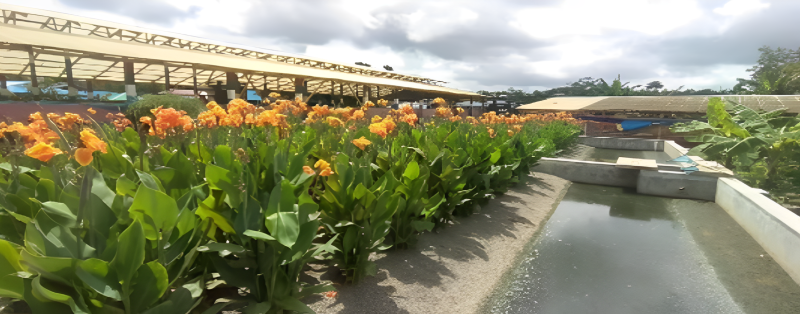2.11 Example: Horizontal Planted Gravel Filter as Secondary Treatment Step in Rohingya Refugee Camp, Bangladesh
HPGF has been applied in the Rohingya Refugee camp in Bangladesh, for example, as post-treatment of effluent after anaerobic digestion and solid-liquid separation – as shown in the flowchart below. The faecal sludge treatment plant (FSTP) was implemented by the Bangladesh Red Crescent Society (BDRCS) with the support of the Swedish Red Cross (SweRC) and the International Federation of Red Cross and Red Crescent Societies (IFRC). The FSTP is designed to treat 15m3 of faecal sludge daily, draining off as a liquid, approximately 50 – 80% of the sludge volume.

The primary plants used in this filter bed are Canna Indica (local name: Kolaboti Plant), Reed Juncus, Papyrus and Phragmites. The plant selection was mainly based on their ability to grow in wastewater and have their roots spread wide. Additionally, the effluent passes through Banana plantations before final discharge.

The overall treatment performance of the FSTP is reported to be 80 – 85% for TS, 75 – 85% for COD, and 60 – 80 % for faecal coliform.
Please find an example case of a vertical planted gravel filter in the Materials tab above.
Further Reading:
- Faecal Sludge Management for Disaster Relief – Technology Comparison Study: Practical technology review of a vertical planted gravel filter in Cox’s Bazar refugee camp. P. 36 – 39 (Link)
